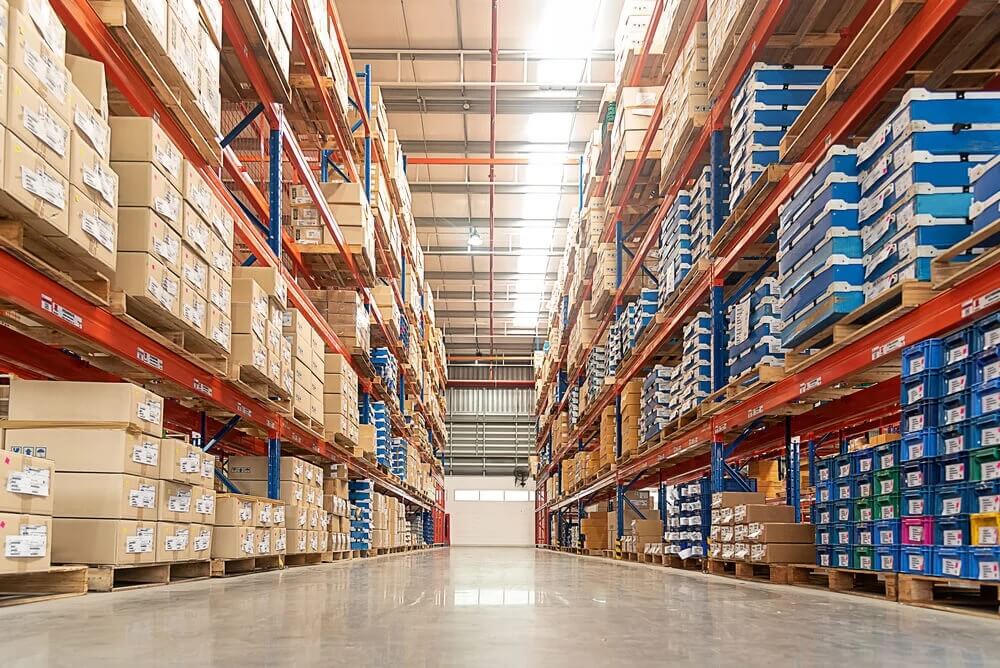Warehouse (Stores)
Warehousing is a complex and dynamic field that plays a critical role in maintaining the integrity and safety of products. Adhering to regulatory standards, and implementing best practices, Warehouses or stores can contribute to the overall efficiency of the supply chain.
The Importance of Warehousing:
Warehouses or stores serve as the central hub for the storage, handling, and distribution of products/materials. These facilities play a crucial role in maintaining the integrity of products/materials from production to delivery. Here are some key aspects that highlight the significance of warehouses:
1. Temperature Control: Many products/materials are highly sensitive to temperature variations. Warehouses are equipped with state-of-the-art temperature control systems to ensure that products and materials are stored within specified temperature ranges, preserving their efficacy and safety.
2. Regulatory Compliance: Many industries especially the pharmaceutical industry are highly regulated, with strict guidelines governing the storage and distribution of medications. Pharmaceutical warehouses must comply with Good Distribution Practice (GDP) regulations to ensure the quality and integrity of pharmaceutical products throughout the supply chain.
3. Inventory Management: Accurate and real-time inventory management is crucial in products/material warehousing. Advanced inventory tracking systems, including barcode technology and RFID (Radio-Frequency Identification), are employed to monitor stock levels, track expiration dates, and prevent stockouts or overstock situations.
4. Security and Traceability: Security is paramount in product/materials warehousing. Access control systems, surveillance cameras, and secure storage areas are implemented to safeguard products. Additionally, traceability systems help track the movement of products throughout the warehouse, providing transparency and accountability.

Challenges in Warehousing:
1. Temperature Challenges: Maintaining the required temperature for various products, especially those with stringent temperature requirements, poses a significant challenge. Specialized storage and transportation solutions, such as cold chain logistics, are employed to address this issue.
2. Regulatory Complexity: Many industry is subject to a myriad of regulations, and compliance is non-negotiable. Warehouses must stay abreast of evolving regulatory requirements, which often vary by region, to ensure adherence and avoid legal consequences.
3. Global Supply Chain Dynamics: Many companies often operate on a global scale, necessitating complex supply chain networks. Coordinating the movement of products across borders while adhering to diverse regulatory frameworks presents a logistical challenge that requires careful planning and execution.
Best Practices in Warehousing:
1. Temperature Mapping: Conducting thorough temperature mapping studies helps identify temperature variations within the warehouse, allowing for strategic placement of temperature-sensitive products.
2. Technology Integration: Implementing cutting-edge technologies, such as warehouse management systems (WMS), automated picking systems, and IoT (Internet of Things) devices, enhances efficiency and accuracy in pharmaceutical warehousing operations.
3. Training and Compliance: Continuous training programs ensure that warehouse staff are well-versed in handling products and adhere to regulatory standards. Regular audits and compliance checks are conducted to identify and rectify any potential issues.
4. Collaboration and Communication: Effective communication and collaboration between companies, logistics partners, and regulatory authorities are vital for the smooth flow of products through the supply chain. Information sharing helps address challenges proactively and ensures timely interventions.
List OF SOPs Warehouse (Stores)
| S. No. | SOP TITLE |
| 1. | Environmental Monitoring in the Stores |
| 2. | Receipt of Raw Materials and Packaging Materials |
| 3. | Cleaning of dispensing aid |
| 4. | Labeling and Storage of Quarantined and Approved Raw and Packaging Materials |
| 5. | Dispensing of raw materials and transfer of dispensed materials from RM stores to the Production Area |
| 6. | Cleaning of Dispensing Area during Product Changeover |
| 7. | Issuance of Packaging Materials and transfer of issued materials from Stores to Production Area |
| 8. | Cleaning procedure of Open Fronted Containment Facility (Dispensing/Sampling Booth). |
| 9. | Handling of Obsolete / Rejected Raw Materials and line rejections |
| 10. | Handling of Obsolete / Rejected printed / unprinted Packaging Materials and Line Rejections |
| 11. | Operating Procedure for Open Fronted Containment Facility (Teknopack -Dispensing Booth). |
| 12. | Handling of In-House Coded Raw Material |
| 13. | Operating Procedure for Powerised Compactor System |
| 14. | Entry and Exit Procedure to Stores |
| 15. | Calibration and Operating Procedure of Mettler Toledo (Balance capacity 310g) |
| 16. | Operating Procedure for Open Fronted Containment Facility |
| 17. | Operating Procedure for Decontamination (De-dusting system) |
| 18. | Operating, Charging, and Cleaning Procedure for Fork Lifter |
| 19. | Cleaning Procedure for the Racks of Storage Compactor System |
| 20. | Operating and Cleaning Procedure for Strapping Machine |
| 21. | Handling of Intermediate Materials |
| 22. | Disposal of Waste/Scrap from Raw materials and Packaging Materials Stores |
| 23. | Cleaning Procedure of Vertical Laminar Reverse Flow Powder Containment Station |
| 24. | Operating Procedure for Vertical Laminar Reverse Flow Powder Containment Station |
| 25. | Cleaning Procedure of Vertical Laminar Reverse Flow Powder Containment Station |
| 26. | Operating Procedure for Vertical Laminar Reverse Flow Powder Containment Station |
| 27. | Operating Procedure for Vertical Laminar Reverse Flow Powder Containment Station( Mobile Dispensing Booth) |
| 28. | Calibration and Operating Procedure for Sartorius Electronic Balance (Capacity 320 G.) |
| 29. | Cleaning Procedure for Vertical Laminar Reverse Flow Powder Containment Station ( Mobile Dispensing Booth) |
| 30. | Operating and Cleaning procedure for IR Dryer |
| 31. | Rack Numbering of Compactor System of Warehouse and Finished Good Stores |
| 32. | Operating, Charging, and Cleaning Procedure for Aerial Work Platform |
| 33. | Cleaning Procedure for De-dusting System |
| 34. | Calibration and Operating Procedure for Sartorius Electronic Balance (Capacity 220 G.) |
| 35. | Rack Numbering of Compactor System for A/C Storage Area |
| 36. | Rack Numbering of Compactor System printed /unprinted foil storage area |
| 37. | Rack Numbering of Compactor System for E.H.G. Capsules Storage Area |
| 38. | Cleaning procedure for SS trolley and trolley wheels |
| 39. | Operating and cleaning procedure for refrigerator (Make Vestfrost) |
| 40. | Calibration, operation and cleaning procedure of Electronic weighing balance (Sartorious) |
| 41. | Operating procedure for digital thermo-hygrometer |
| 42. | Operation and Cleaning of Dedicated Vacuum Cleaner of Store Area. |
| 43. | Cleaning of Return Air Filters and scavenging Prefilter and intermediate Prefilter (Dispensing Booth) |
| 44. | Cleaning Procedure for Pallets in stores. |
| 45. | Receipt and Storage of Finished Goods. |
| 46. | Opening and Closing of Store. |
| 47. | Physical verification and updation stock of raw / packing material |
| 48. | Receipt of raw materials and packaging materials in SAP |
| 49. | Issuance of raw materials and packaging materials in SAP |
| 50. | Procedure for distribution of finished products |
| 51. | Receipt, storage and issuance of labels to production blocks |
| 52. | Material to Material transfer and retesting of raw/packaging material |
| 53. | Operating Procedure of Data-logger |

